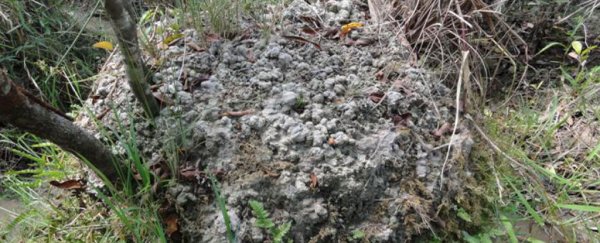Scientists have long puzzled over what created strange mound formations in the tropical wetlands of South America, and a new study appears to have found the answer.
The mounds, which are called surales, are found throughout the Orinoco Llanos wetlands of Columbia and Venezuela, and according to research led by archaeologist and palaeoethnobotanist José Iriarte, these spectacular formations are actually massive conglomerations of worm poop.
Surales vary in size, with the largest mounds measuring up to 5 metres in diameter and up to 2 metres tall. To figure out how these gigantic lumps came to be, Iriarte, a researcher from the University of Exeter in the UK, and his team analysed the physical and chemical makeup of the mounds' soil.
The team found that up to one half of the total soil mass of the mounds is composed of earthworm casts – the muddy soil byproduct ejected from worm guts. It's not surprising that worms leave their casts behind – after all, everybody has to go sometimes – but how do their poop piles become so… comically epic?
According to the researchers, the surales form when large earthworms feed in shallow, flooded soils within the wetlands. These big guys leave their larger deposits behind, creating mini poop 'towers' that start sticking above the surface of the water. Kind of like when Saruman's tower becomes flooded in by the Ents… except with worm poop instead of an evil wizard.
After enough time, this casts tower begins to form into a mound, and the largest surales are formed when a couple of smaller mounds situated close enough fuse together.
 Professor José Iriarte
Professor José Iriarte
Despite the surales' somewhat humble beginnings, now that we know how they come to be, it helps solve a riddle that has long perplexed researchers. Previous hypotheses on their formation included termite activity and a form of land erosion, but the new findings finally discount those explanations.
"This exciting discovery allows us to map and understand how these massive landscapes were formed," said Iriarte. "The fact we know they were created by earthworms across the seasonally flooded savannahs of South America will certainly change how we think about human versus naturally-built landscapes in the region."
The findings are reported in PLOS ONE.
